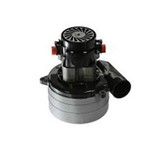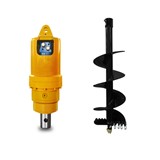Australia is expected to generate $317.6 billion in export revenue in 2013-14, rising as a percentage of GDP. Bulk commodities such as iron ore, coal, gold and natural gas have been our biggest exports. Asia is Australia's most significant export market, accounting for the majority of exports. Australia's export landscape is evolving, with IBISWorld revealing the five biggest export prospects – beyond mining commodities – in years to come.
According to IBISWorld general manager (Australia), Karen Dobie, macroeconomic factors are tipped to favour exporters over the next five years, particularly as a result of growing demand from Asian trading partners. Australian exports will become increasingly price competitive as the value of the dollar softens against the currencies of Australia's major trading partners.
Oil and gas extraction
Escalating global demand and higher world prices for gas are driving capital investment in the oil and gas extraction industry, which is supporting rising output.
"IBISWorld expects the number of export-oriented LNG projects to rise from two this year to nine by 2018, with construction of export facilities on the east coast tipped to prompt a dramatic boost in performance over the next five years," Dobie said.
According to IBISWorld, revenue for the oil and gas extraction industry will total $48.2 billion this financial year, growing 16 per cent per year to total $101 billion in 2018-19. Exports will be worth 59.9 per cent of revenue this year and a forecast to reach 61.5 per cent by 2018-19.
Food manufacturing
Australia's high food standards and quality ingredients are the driving forces behind export growth in emerging markets. IBISWorld forecasts manufacturing sub-sectors – including baby food and dairy – to shine in the next five years.
"Revenue for Australia's baby food manufacturing industry is forecast to grow by 2.9 per cent per year over the next five years to reach $206.7 million, while revenue for dairy product manufacturers is forecast to grow by 2.1 per cent to reach $12.8 billion," Dobie said.
"Exports are playing a key role in driving growth in both of these sectors. Baby food exports are anticipated to rise by 6.5 per cent per year to $22.5 million by 2018-19, while dairy product exports are expected to rise by 5.2 per cent per year, with milk powder and cheese exports performing particularly well."
Key markets driving growth include China and India, which are exhibiting growing demand for a greater variety of high-quality products. Population growth and increasing wealth in the growing middle classes of Asian trading partners has made these products more accessible to a wider market.
Beer manufacturing
IBISWorld expects Australian beer manufacturers will place an increased focus on new export markets in the Asia-Pacific region over the coming five years, as domestic consumption of traditional beer products – such as VB and Carlton – continues to fall as Australians opt for alternative beverages such as craft beer, cider and wine.
"Exports as a share of total industry revenue are expected to grow from 0.8 per cent in 2008-09 to 1.4 per cent by 2018-19, assisting to boost overall industry growth from a sluggish 0.9 per cent per year over the past five years, to 1.7 per cent per year in the next five years," Dobie said.
In 2013-14, IBISWorld expects total beer manufacturing industry revenue to be $4.7 billion, and this is forecast to rise to $5.1 billion by 2018-19.
Education services and related travel services
"The education and training sector in Australia has grown at 2.6 per cent per year over the past decade and there has been a steady increase in demand for postgraduate courses following the global financial crisis, as workers upskilled to boost job security and future employment prospects," Dobie said.
Universities and other higher education make up the second-largest segment within the broader education and training field, with industry revenue of around $26.6 billion. IBISWorld projects this to reach $31.9 billion by 2018-19, with revenue growing at a compound annual rate of 3.7 per cent.
"International students are a major market for this sector, accounting for about 24.9 per cent of total enrolments this year. Following annual growth of 7 per cent prior to 2009, industry growth has cooled off somewhat because of the high Australian dollar, but the anticipated decline of the dollar in the next five years will act to boost enrolments from foreign students once again," Dobie said.
"Further demonstrating international confidence and growth prospects for Australia's higher and vocational education industries, new players have recently entered this sector. Laureate International Universities will open its first comprehensive Australian university – Torrens University Australia – in South Australia in January 2014."
The export of education-related travel services – covering expenses such as tuition fees and living costs – amounted to $14.5 billion last year, and this sub-sector has grown at 2.9 per cent per year since 2007-08 and an annualised 16.3 per cent over the past decade.
Legal services
While the past five years have been difficult for the legal services industry, as a result of cost-cutting measures and fiscal conservatism post-global financial crisis, exports as a share of revenue are forecast to rise. This year, the industry will post revenue of $20.7 billion and is expected to expand at an annualised 2.9 per cent to reach $23.9 billion by 2018-19.
"As Australian firms become increasingly active in global markets – such as the US and the Asia-Pacific markets – we'll see export revenue rising. As business confidence gradually grows and businesses expand their global investment, mergers and acquisitions work will increase for legal services firms with an international outlook."
- Suppliers
- New to IndustrySearch? Book a Demo
- Advertise with us
- Login
- Email Marketing
- Buyers
- Get Quotes
- Articles & Ideas
- Login
- Subscribe to newsletter
- My Details
- Get Quotes
- Automation & Control
- Automotive Workshop Equipment
- Commercial Cleaning Equipment & Supplies
- Construction Equipment & Heavy Machinery
- Conveyor Systems & Components
- Electrical & Power Generation Equipment
- Electronic Components
- Farming & Agriculture
- Food & Beverage Processing
- Forklifts & Forklift Attachments
- Hydraulic & Pneumatic Equipment
- Industrial Materials, Tools & Components
- Industrial Pumps
- IT Hardware & Industrial Computing
- IT Software & Applications
- Laboratory Equipment & Instruments
- Manufacturing & Industrial Equipment
- Material Handling & Lifting Equipment
- Metalworking & Machining
- Mining Equipment & Machinery
- Packaging & Labelling Machinery
- Pallet Handling Equipment
- Personal Protective Equipment
- Security & Surveillance
- Test & Measurement
- Transport & Logistic Equipment
- Warehouse Storage, Shelving & Racking
- Waste Treatment & Environmental Management
- Welding Machines & Accessories
- Woodworking & Joinery Machines
- Workplace Equipment
- Workplace Safety Equipment
- Get Quotes
- Automation & Control
- Automotive Workshop Equipment
- Commercial Cleaning Equipment & Supplies
- Construction Equipment & Heavy Machinery
- Conveyor Systems & Components
- Electrical & Power Generation Equipment
- Electronic Components
- Farming & Agriculture
- Food & Beverage Processing
- Forklifts & Forklift Attachments
- Hydraulic & Pneumatic Equipment
- Industrial Materials, Tools & Components
- Industrial Pumps
- IT Hardware & Industrial Computing
- IT Software & Applications
- Laboratory Equipment & Instruments
- Manufacturing & Industrial Equipment
- Material Handling & Lifting Equipment
- Metalworking & Machining
- Mining Equipment & Machinery
- Packaging & Labelling Machinery
- Pallet Handling Equipment
- Personal Protective Equipment
- Security & Surveillance
- Test & Measurement
- Transport & Logistic Equipment
- Warehouse Storage, Shelving & Racking
- Waste Treatment & Environmental Management
- Welding Machines & Accessories
- Woodworking & Joinery Machines
- Workplace Equipment
- Workplace Safety Equipment
Trusted by 1,000,000+ Australian industrial buyers
Buyers
- Discover products & solutions
- Login
- Subscribe To Newsletter
- Browse All Products
- Read Articles
Suppliers
Advertise
- Promote your products & solutions
- New to IndustrySearch? Book a Demo
- Login / Forgot Password
- Advertise Your Products
- Success Stories
- Email Marketing
- Suppliers
- Advertise with us
- Login
- Email Marketing
- Buyers
- Get Quotes
- Articles & Ideas
- Login
- Subscribe to newsletter
- My Details
Get Quotes
- Automation & Control
- Automotive Workshop Equipment
- Commercial Cleaning Equipment & Supplies
- Construction Equipment & Heavy Machinery
- Conveyor Systems & Components
- Electrical & Power Generation Equipment
- Electronic Components
- Farming & Agriculture
- Food & Beverage Processing
- Forklifts & Forklift Attachments
- Hydraulic & Pneumatic Equipment
- Industrial Materials, Tools & Components
- Industrial Pumps
- IT Hardware & Industrial Computing
- IT Software & Applications
- Laboratory Equipment & Instruments
- Manufacturing & Industrial Equipment
- Material Handling & Lifting Equipment
- Metalworking & Machining
- Mining Equipment & Machinery
- Packaging & Labelling Machinery
- Pallet Handling Equipment
- Personal Protective Equipment
- Security & Surveillance
- Test & Measurement
- Transport & Logistic Equipment
- Warehouse Storage, Shelving & Racking
- Waste Treatment & Environmental Management
- Welding Machines & Accessories
- Woodworking & Joinery Machines
- Workplace Equipment
- Workplace Safety Equipment
Get Quotes
- Automation & Control
- Automotive Workshop Equipment
- Commercial Cleaning Equipment & Supplies
- Construction Equipment & Heavy Machinery
- Conveyor Systems & Components
- Electrical & Power Generation Equipment
- Electronic Components
- Farming & Agriculture
- Food & Beverage Processing
- Forklifts & Forklift Attachments
- Hydraulic & Pneumatic Equipment
- Industrial Materials, Tools & Components
- Industrial Pumps
- IT Hardware & Industrial Computing
- IT Software & Applications
- Laboratory Equipment & Instruments
- Manufacturing & Industrial Equipment
- Material Handling & Lifting Equipment
- Metalworking & Machining
- Mining Equipment & Machinery
- Packaging & Labelling Machinery
- Pallet Handling Equipment
- Personal Protective Equipment
- Security & Surveillance
- Test & Measurement
- Transport & Logistic Equipment
- Warehouse Storage, Shelving & Racking
- Waste Treatment & Environmental Management
- Welding Machines & Accessories
- Woodworking & Joinery Machines
- Workplace Equipment
- Workplace Safety Equipment
Trusted by 1,000,000+ Australian industrial buyers













